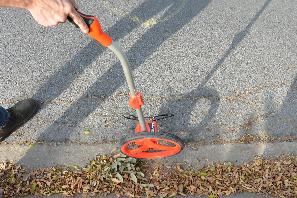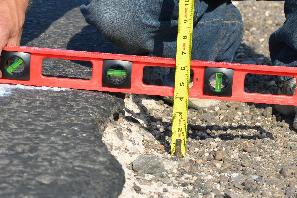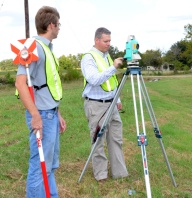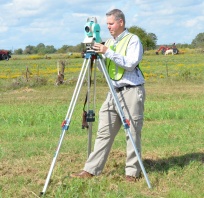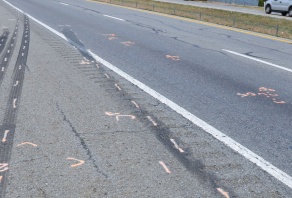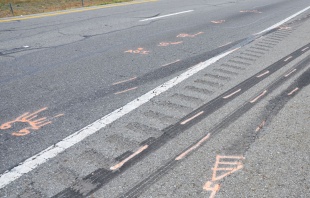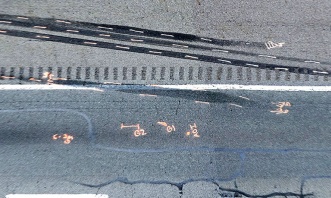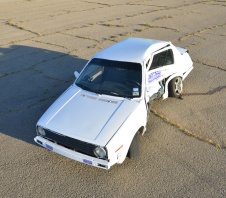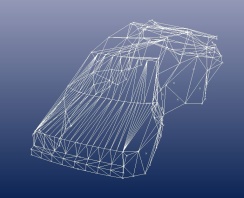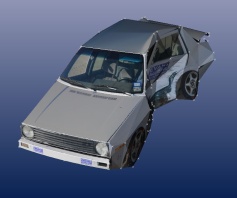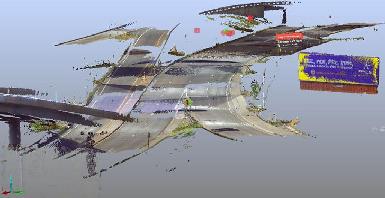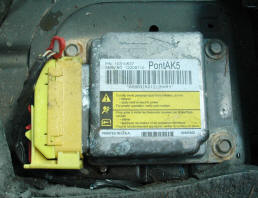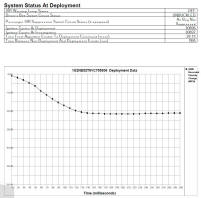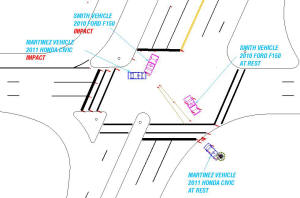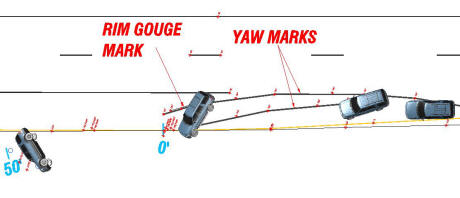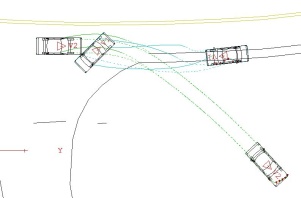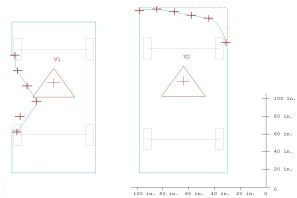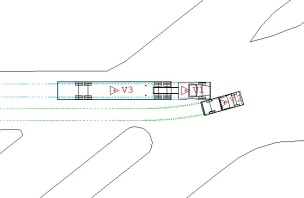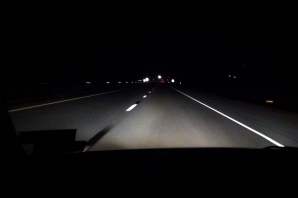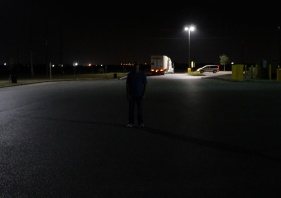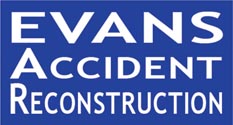
Office (979) 703-7227
Fax (979) 703-7247
24-Hour Crash Response (979) 575-9422
Accident Reconstruction Technologies
Many different types of technologies are
available today in the accident reconstruction field. Some cases can
be handled effectively with simple methods such as an accident scene
drawing, resulting in time and cost savings. Others may benefit
greatly from a detailed simulation animation and other multimedia,
helping jurors and judges understand even the most complicated
collisions. An experienced and well-trained accident
reconstructionists will evaluate each case based on the information
available and work with the client to determine the most effective
course of action for that particular case.
Documentation of accident scenes and vehicle inspections
Photography
Photographs are the best way to document and preserve evidence. And
today’s digital cameras allow for thousands of high quality
photographs to be taken at an accident site. Accident reconstruction
experience can make a difference in both knowing what to photograph
and in using methods that ensures the objects in the photographs are
understood by future viewers.
Training is important, and for that reason photography is covered in
many accident investigation and reconstruction classes. A common
mistake is photographing a subject in such a way that it can not be
related to other important information, such as a close-up of a tire
mark on pavement that does not identify on which part of the roadway
it was located. Another example is a photograph of a defective tire
on a vehicle, with no way of knowing which tire is in the
photograph.
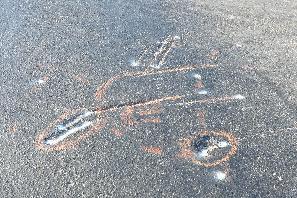
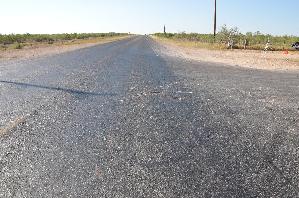
Measuring equipment
There are many ways to document the information available at the
accident site.
A measuring tape or wheel can be used to measure skid mark
lengths, road lane widths, vehicle damage, and other accident site
details. There are instances in which measuring tapes can be used to document the
entire accident site. However, measuring tapes have their limitations in accuracy, and it
can take longer to document an accident site.
Modern survey equipment allows for many data points to be quickly and accurately recorded. The most common of this type of equipment is a Total Station, which uses a laser to measure the distance to a prism mounted on a pole. There are variations on this technology that do not require a prism and can measure some surfaces directly – these can be useful when measuring data in a busy roadway, allowing workers to remain safely out of the way of traffic. There are also robotic systems, where only one worker is needed. The worker carries a pole with a prism, and the total station tracks them to read the data points. GPS-based survey systems are also available to allow a single person to complete a survey. Each system has different inherent accuracies and tradeoffs. A single-person system can reduce employee costs, but a two-person system means twice the eyes are available to keep a lookout for traffic and other safety issues.
Photogrammetry
Computer programs such as PhotoModeler
allow a reconstructionist to make a scaled model of an accident site
or vehicle from photographs alone. PhotoModeler is an important tool
in documenting evidence on a high-traffic roadway where traditional
methods would be unsafe. In another application, photographs of a
vehicle can be used to make measurements or a scaled model after a
vehicle is no longer available. It is also useful when accident
evidence is no longer present at an accident site, such as when tire
marks have been washed away by rain. Photogrammetry is more
difficult and time consuming than other methods, but can be
invaluable in certain circumstances.
There is training involved with taking
photographs that allow PhotoModeler to work best; please do not
substitute your in-house photographer for that of an experienced
accident reconstructionist. Below are two examples of
photogrammetry:
Roadway uses for PhotoModeler:
Police paint marks, gouge marks, and tire marks are present on a
busy roadway, but going out into traffic with survey equipment would
be unsafe. Photographs are taken of the roadway evidence, then these
photographs are inputted into the PhotoModeler program to make a
scaled drawing of the accident scene, as well as an orthogonal
photograph (photograph that appears to have been taken from
overhead). The first 2 photographs below were taken of the paint
marks and tire marks on a roadway. The image on the right is a
computer generated orthographic image of the roadway as it would appear if a
photograph had been taken from above and free from lens perspective,
or "fish-eye effect". The roadway, paint marks and
tire marks were then imported into AutoCAD. Scale models of the
vehicles were then placed on the roadway information to show the
positions at impact.
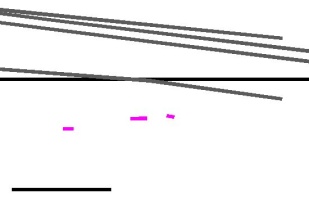

Vehicle uses for PhotoModeler: A wrecked vehicle is inspected. Photographs are taken (with PhotoModeler in mind) in case PhotoModeler may be needed to investigate an issue that was not foreseen at the time of the vehicle inspection. For example, a portion of the vehicle that is undamaged may need to be examined to rule out other possible accident theories. Sometimes due to time constraints, a vehicle will have to be photographed for photogrammetry instead of using other methods of measuring the vehicle damage. PhotoModeler also allows for a vehicle to be made into a 3-D model that can be used in a variety of programs, including computer animations.
3-d Scanners such as those by
Faro are becoming popular. This equipment works similarly to a Total
Station. The scanner sits on a tripod and sends out a range-finding
signal (and some models also record the image data). The scanner can
make a 3-dimensional model of the surroundings, with the greatest
detail closest to the scanner. Scans can be taken from several
locations to overcome line-of-sight limitations. For example,
performing a scan around the four sides of a vehicle will allow for
a very complete model of the surface of the vehicle. At accident
sites, scans can be performed in several locations and linked
together to overcome the range limitations of a single scan.
There are downsides to laser scanning, mainly
that they see line-of-sight only. A 3-D scan of the surface of a
wrecked vehicle will not show damage that is hidden. For example, a
plastic bumper cover may look relatively undamaged while the metal
frame and underlying structure are crushed. A 3-D scan of an
accident site will miss gouge marks and other data that is hidden by
grass. 3-D scanning allows technicians who are less trained in
accident reconstruction to document vehicles and accident sites,
which can lead to information being missed. The latest 3-D scanners
are very expensive pieces of equipment, but they can be rented for a
reasonable amount if the case warrants their use.
Vehicle “Black Box” Data
Many late model vehicles (and some GM vehicles
manufactured as far back as 1994) contain information that can be
used to reconstruct an accident. Airbag Control Modules, Engine
Control Modules, and Roll Over Sensors may contain information that
can be “downloaded”. The main system for accessing this data is the
Crash Data Retrieval (CDR) system. Currently 10 manufacturers are
partnered with the CDR system to allow access to the information, so
a myriad of different makes, models, and years are covered by the
system. There is a training course that one must go through to be
certified to download the information, as well as a course to be
certified in understanding the information obtained.
The information retrieved from the vehicle in a
CDR download must be used as part of a complete accident
reconstruction; the information alone can be misleading. A download
may report that the vehicle was traveling 70 mph at impact, when in
reality the vehicle could be going 20 mph with the tires spinning.
This is a difficult subject that requires extensive training and
knowledge of airbag systems, sensors, and vehicle design. Note:
Attempting to access the data or even inspecting the vehicle
incorrectly can erase the data that may be available.
Accelerometers such as those made by Vericom can measure accelerations very accurately and give a wealth of information. Common uses are performing braking tests (seeing how fast a vehicle can stop) or attempting to understand the friction of the roadway. Accelerometers are put to good use in tractor trailer acceleration or turn tests in which a reconstructionist determines how long it takes a tractor trailer to accelerate from a stop light or make a turn onto a roadway. Accelerometers can also measure the impact forces from an impact or crash test. Some of the newer and more advanced Vericom units can measure and record other factors as well, such as GPS locations, speeds, and more.
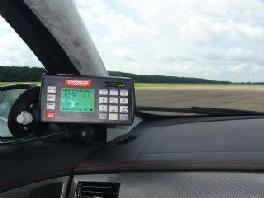
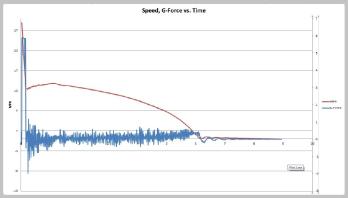
Technologies used to reconstruct an accident and present information
Drawing Programs such as
AutoCAD and MapScenes are used to make scaled drawings of accident
scene from the scene measurements. AutoCAD can be used to draw
scaled models of the vehicles as well as other roadway features.
These drawings are the backbone of reconstructions and allow for the
understanding of the relationships of the vehicles at impact as well
as the events leading up to impact.
The accident scene drawings can then be exported to other programs
such as those for computer modeling and computer animation. A
drawing can also be printed in a large size on a plotter, then used
in depositions or it can be displayed in a court during trial.
There are many computer programs that can be used to reconstruct an accident: among them are SMAC, REC-TEC, VCRware, PC Crash, HVE ED SMAC, and ARAS 360. These programs vary in how they work and their ease of use. Some programs are touted as an “all-in-one solution” that will provide vehicle data, analyze the crash, and even make a computer animation. The key is to understand the limitations of each program and know how each program operates. A famous expression regarding computer programs is “garbage in, garbage out”. A high-tech and elaborate-looking accident reconstruction can still be incorrect, and these programs can be misused.
Computer animations are a very
powerful tool for communicating different aspects of an accident.
Difficult time and distance concepts can be made clear. Views can be
shown from inside a model of a vehicle to show what the driver could
or could not have seen, and vehicle damages and motion can be
illustrated. There are many different computer programs that can be
used to produce an animation. 3D Studio Max is a powerful program
that can be highly detailed, but it is difficult to use. There are
accident reconstruction programs that will make animations easier to
generate, but they offer less control.
A computer animation will do what it is told to do – there must be a
good foundation of accident reconstruction data that is used to make
the animation. Most accident reconstruction firms do not make their
own computer animations in house, relying instead on outside
companies that do not have accident reconstruction backgrounds. A
simple online search of computer animations will show animations of
vehicles undergoing unrealistic motions or vehicles interacting
incorrectly at impact.
At Evans Accident Reconstruction we make our own computer animations
in-house, using advanced animation programs that rely on data from
proven accident reconstruction methods. Click
the image below to view a sample animation produced by Evans
Accident Reconstruction.
Click image above to play video
Click here for smaller, lower-quality
video
suitable for slower internet connections
PowerPoint is a program that allows a user to
produce multimedia presentations, often used in court by an accident
reconstructionist. This program will allow for photographs, reports,
computer animations and other data to be shown clearly using a
projector or TV. Individual slides can be scrolled through using a
remote control.
Plotters are printers that can print drawings,
photographs and other data on a large scale. These prints can be
mounted on poster board for display purposes. Scaled drawings can be
useful for witnesses to mark information such as vehicle positions
in depositions. Evans Accident Reconstruction has a full color 36”
roll plotter that we use for these large scale exhibits.
Crash testing is not performed in the majority of
accident reconstructions. Most accidents can be reconstructed using
NHTSA crash test data, computer modeling, mathematical calculations,
and other methods. Crash testing is used most often for research
purposes. Crash Demonstrations may be a better term for what an
accident reconstruction firm most often performs. There are times
when an aspect of a case is demonstrated so that involved parties
such as jurors can better understand the accident. Vehicles may be
subjected to an impact to show damage severity or damage marks (or
lack thereof). Instruments such as an accelerometer can be used to
measure the forces occupants would undergo in an accident.
Click on the image below to view a crash
demonstrations performed by Evans Accident Reconstruction.
Click image above to play video
Visibility studies and night visibility studies are often used in accident reconstructions. Determining if a visibility obstruction played a role in an accident is something that should be considered at most accident scenes. For example, did a tree or bush hide a vehicle from a driver’s view?. Night visibility is observing lighting conditions to see what a driver could have seen at the time of the accident. Vehicle headlights, the phases of the moon, and other lighting sources must be considered, as these can play a big role in nighttime accidents involving pedestrians, animals, or disabled vehicles. Light meters are often used to measure the lighting during night visibility studies. Using proven methods taught in accident reconstruction classes, photographs can be taken at night which accurately show a jury what the lighting conditions were at the time of the accident.
There are innumeral databases and programs which accident reconstructionists use in their work. Databases such as AutoStats and Truck Index provide vehicle dimensions and weights. VinLink can decode vehicle VIN numbers and provide information on the vehicles. CarFax and AutoCheck can give vehicle histories of sales, accidents, service, etc. NHTSA also has information on crash test, recalls, technical service bulletins and more.
